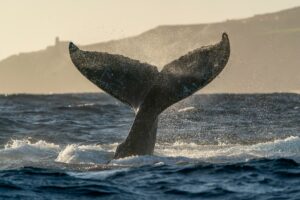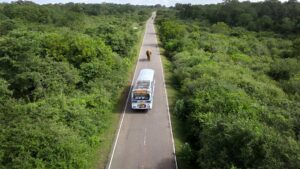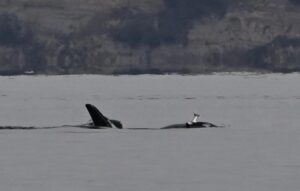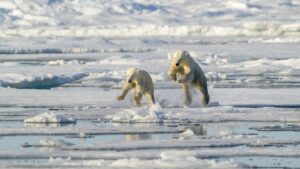The Fairbanks, Alaska airport wildlife patrol staff is about to get a strange new hire.
Officials announced the airport will soon deploy a robot dog kitted out as a coyote or fox on its grounds. Nicknamed “Aurora,” the headless machine will prowl the airport, imitating a predator in an effort to enhance safety.
Ninety-two incidents where planes struck animals occurred last year near airports across Alaska. This included 10 in Fairbanks, according to the Federal Aviation Administration. In 1995, a jet hit a flock of Canada geese and crashed at Anchorage’s Elmendorf Air Force Base, killing 24 people.
The Alaska Department of Transportation and Public Facilities first issued the robo-dog announcement. It also posted a video to Instagram displaying some of the unit’s capabilities. It runs, climbs stairs, and clambers over stones on a lakeshore.
A ‘cute face’
Aurora takes its name from the northern lights and its gradient metallic coating in shades of purple and green. The department has gendered Aurora as a “she,” and mentions in the video that the machine has a “cute face.”
Reactions have been mixed.
View this post on Instagram
Alaska’s second-largest airport, Fairbanks International Airport covers about 1,400 hectares southwest of the city. Aurora will imitate predator behavior along the runway, performing a scan each hour to limit harmful interactions between planes and wildlife. Operators can use interchangeable panels designed to make the robot mimic either a fox or coyote.
The department frames the measure as the latest idea in a long drawn-out wildlife management campaign surrounding Alaska airports.
Aurora became the primary plan after officials had previously rejected a plan to use drones to spray the target area with repellent, including grape juice, a project manager told The Associated Press.
Elsewhere, officials released pigs at a lake near the Anchorage airport in the 1990s, hoping they would eat waterfowl eggs near landing areas. Safety staff also commonly groom grass around lakes and ponds, or scare wildlife off with noisemakers like paintball guns or poppers, the Anchorage Daily News reported.
Like Fairbanks, some airfields in the contiguous U.S. also use dogs for wildlife safety — real ones, anyway.
“The sole purpose of this is to act as a predator and allow for us to invoke that response in wildlife without using other means,” said Ryan Marlow, a program manager with the transportation department.
Marlow said that robots like Aurora could save costs over human deterrents. Still, a human “handler” will always accompany it.
The Fairbanks deployment will function as a test for possible implementation at other, smaller airports. Purchased with part of a federal grant, the Boston Dynamics robot reportedly cost $70,000.






